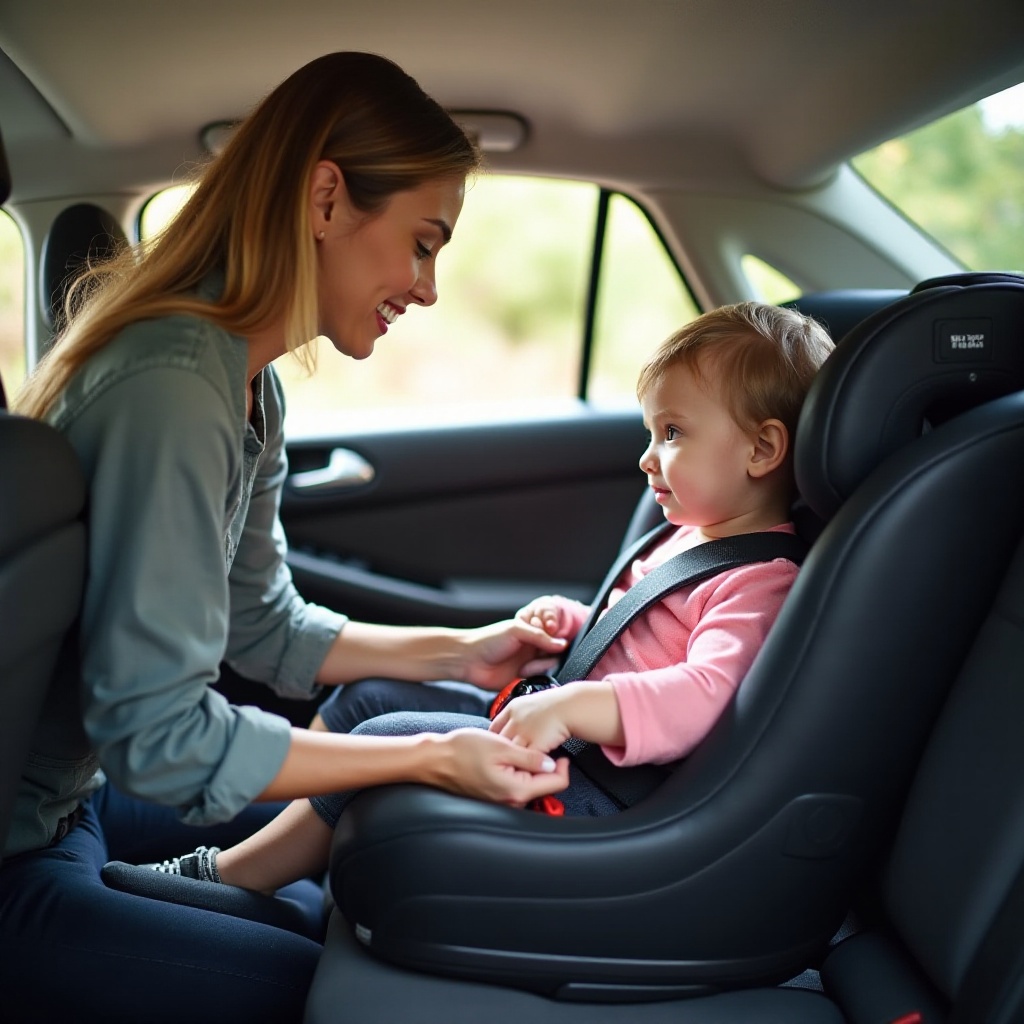Introduction
Properly buckling a car seat can make all the difference in keeping your child safe during travel. Unfortunately, many parents are not fully aware of how to correctly install and use car seats. This guide aims to clarify the process, explain the importance of proper installation, and provide practical tips to ensure your child’s safety in the car. By the end of this guide, you’ll feel more confident in your car seat practices and help ensure a safer journey for your little ones.

The Importance of Properly Buckling Your Child
Ensuring that your child is properly buckled in their car seat is not merely a recommendation; it can be a lifesaver. Car accidents are a leading cause of injury and death among children, and using a car seat correctly significantly reduces the risk. Proper usage can prevent serious injuries during collisions by restraining the child effectively and distributing crash forces.
A misinstalled or poorly buckled car seat can endanger your child’s life rather than protect it. The data is startling: roughly 59% of car seats are installed or used incorrectly. To mitigate these risks, becoming proficient in car seat installation and usage is essential for every parent and caregiver.
Choosing the Right Car Seat
Selecting the appropriate car seat is a pivotal part of ensuring your child’s safety. Not all car seats are created equal, and the right choice depends on several factors, including your child’s age, weight, and height. This critical understanding lays the foundation for proper installation and usage in real-world scenarios.
Different Types of Car Seats
- Infant Car Seats: These are rear-facing seats designed for newborns and infants up to 2 years old, depending on their growth rate.
- Convertible Car Seats: Designed to accommodate children from infancy to toddlerhood, these seats can switch from rear-facing to forward-facing as your child grows.
- Booster Seats: For older children who have outgrown the forward-facing seat, booster seats use the car’s seat belt for restraint.
Age and Weight Guidelines
It’s crucial to follow the specific guidelines that come with the car seat. Manufacturers label their car seats with age, weight, and height limits. For the best protection:
– Always place infants in a rear-facing car seat.
– Transition to a forward-facing seat once your child outgrows the height/weight limits for the rear-facing configuration.
– Use booster seats until they can safely use the car’s seat belt alone.
Transitioning from choosing the right car seat to its correct installation is the next step in safeguarding your child during travels.

Installing the Car Seat
Correctly installing the car seat is critical. A small mistake in installation can negate the protective benefits of even the best car seats.
Rear-Facing vs. Forward-Facing Installation
Rear-Facing Installation:
– Install the car seat at the back of the vehicle.
– Use the car’s seat belt or LATCH system to secure the seat.
– Ensure the seat is at the correct recline angle as per the manufacturer’s guidelines.
Forward-Facing Installation:
– Transition only when your child exceeds the rear-facing seat’s capacity.
– Anchor the seat using the vehicle’s tether and LATCH system or seat belt.
– Ensure the top tether is anchored to the designated anchor point in the car to reduce forward head movement during a crash.
Tips for Securing the Car Seat Tightly
- Read the Manual: Both vehicle and car seat instructions should be thoroughly understood.
- Check for Movement: The base should not move more than an inch side-to-side or front-to-back when tested at the belt path.
- Use the Right Belt Path: Ensure you use the correct belt path for rear-facing or forward-facing orientations.
Having successfully installed the car seat, the next step is equally important: positioning your child securely.
Positioning Your Child in the Car Seat
Putting your child in the car seat correctly is as crucial as installing the seat itself.
Correct Positioning of Harness Straps
- For rear-facing, the harness straps should be at or below your child’s shoulders.
- For forward-facing, they should be at or above the shoulders.
- Ensure the harness clip is at armpit level to hold the straps in place over the child’s shoulders.
Checking Shoulder Strap Height
- Always follow the car seat manual to adjust the shoulder height straps.
- Straps should lie flat without twists.
- Perform the pinch test: if you can pinch excess webbing between your fingers, tighten the straps.
Once your child is securely positioned, you can move to the actual buckling process.

The Buckling Process
Correctly buckling your child into the car seat ensures that all safety measures function effectively.
Steps to Securely Buckle Your Child
- Loosen the Harness: Gently place your child in the seat.
- Position the Harness Straps: Make sure they are in the right place as mentioned earlier.
- Buckle the Harness and Chest Clip: Secure the harness clip at the correct level.
- Tighten the Harness Straps: Pull the harness adjuster strap to remove any slack.
Common Mistakes to Avoid
- Loose Straps: Always perform the pinch test to ensure they are snug.
- Wrong Chest Clip Position: Keep the chest clip at armpit level instead of around the belly.
- Bulky Clothing: Remove thick coats or blankets that can compress, leading to loose straps.
Following these steps properly ensures your child is securely and safely buckled.
Safety Tips and Best Practices
Ensuring the continual safety of your child extends beyond just the initial installation and buckling. Paying attention to ongoing checks and maintenance can be a lifesaver.
Regular Maintenance and Checks
- Regularly inspect the car seat for wear and tear.
- Check that the installation has not loosened over time.
- Clean the straps and harnesses according to manufacturer recommendations.
Updating Car Seats as Your Child Grows
- Monitor the car seat’s expiration date.
- Transition to a different type of car seat or booster as your child exceeds size and weight limits.
- Pay attention to recalls or safety notices related to your car seat model.
By adhering to these best practices, you can enhance your child’s safety and ensure their car seat remains effective throughout its use.
Conclusion
Properly buckling in a car seat is not just about following the law; it’s about safeguarding your child. From choosing the correct seat, proper installation, harnessing your child correctly, to regular maintenance, these steps ensure you’re doing all you can to keep your child safe. Keep this guide handy, and always prioritize safety and accuracy in every buckle.
Frequently Asked Questions
What is the safest position for a car seat in the car?
The back middle seat is generally considered the safest position for a car seat as it’s the farthest from the front and side impacts.
How tight should the car seat straps be?
The straps should be snug and pass the pinch test; you shouldn’t be able to pinch excess strap webbing between your fingers.
How often should I check or replace my child’s car seat?
You should check installation and strap tightness every trip and replace the car seat according to the manufacturer’s expiration date or after a significant crash.
